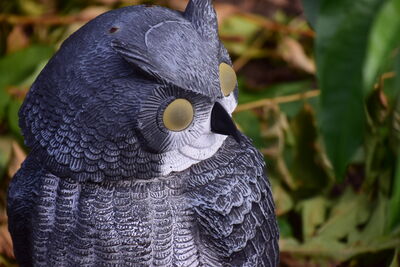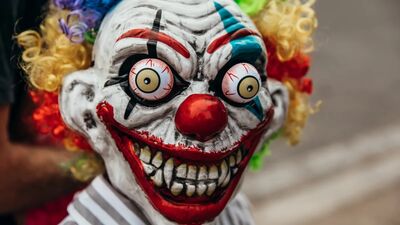What is JPEG??? (simplified)
Feb 1, 2023 08:03:17 #
Dalek wrote:
After reading this, did I earn any college credits?
You'd have to pay me to read something that long.
Feb 1, 2023 08:56:25 #
Feb 1, 2023 09:28:11 #
Feb 1, 2023 10:28:29 #
Interesting article although a little over my head but the question remains since my camera's dynamic range is 11 stops, and that is the range of jpegs, what would be gained by shooting in RAW?
Thanks
Thanks
Feb 1, 2023 11:49:31 #
Picture Taker
Loc: Michigan Thumb
JPG, RAW --the difference is in your view for each picture and each photographer. That bis what photography is, our own view of a scene. Pick one or pick both.
Feb 1, 2023 13:41:40 #
CHG_CANON wrote:
Shooting in JPEG is nothing to be ashamed of, but do it in private and wash your hands afterwards.
You may think it's in secret but God and Santa Claus see all.
Feb 1, 2023 13:42:20 #
Far more info than i knew or need to know. My jpegs look great, don't take up much time or space, and last a lifetime.
Feb 1, 2023 13:45:59 #
BigDaddy wrote:
Judging from many of the opinions posted on the hog, (and all over the internet) I don't think the advantages and pitfalls are all that well known, and a LOT of what is "known" is false or massive exaggeration.
Film, digital, RAW, Jpeg, SOOC, 35mm, APSC, M4/3, DSLR, Mirrorless, bridge, compact, smart phone -does it matter how you got there as long as the final image is what you wanted?
Its just a journey - going home does it matter how you get there? bus, car, bike, plane, boat, feet, horse,wheelchair as long as you reach your destination when you wanted to, as you wanted to!
I don't know which are more irritating the "I always shoot RAW" brigade, the odd "mirrorless way of life" people or those crusty old curmudgeons who criticise everything (probably includes me in the latter)


Feb 1, 2023 13:51:09 #
rlv567 wrote:
I have excerpted a few salient points from a very ... (show quote)
The important question, regarding RAW or JPEG is, can you create art with it. You cannot call it art until you have removed all the color and converted it to B&W. For real art it doesn't matter.
Feb 1, 2023 14:11:25 #
CHG_CANON wrote:
Shooting in JPEG is nothing to be ashamed of, but do it in private and wash your hands afterwards.


Feb 1, 2023 14:21:40 #
JimGray
Loc: Albuquerque, New Mexico
BigDaddy wrote:
Judging from many of the opinions posted on the hog, (and all over the internet) I don't think the advantages and pitfalls are all that well known, and a LOT of what is "known" is false or massive exaggeration.


Feb 1, 2023 14:38:16 #
frankraney wrote:
It would not keep coming up if all was aware of what ajpeg is, it's advantages and disadvantages.
This is a very good article for those that have questions and want to learn. Is that not the purpose of uhh?
Smile a little, smell the coffee, and quit being so grumpy all the time.

This is a very good article for those that have questions and want to learn. Is that not the purpose of uhh?
Smile a little, smell the coffee, and quit being so grumpy all the time.




Feb 1, 2023 16:30:37 #
rlv567 wrote:
I have excerpted a few salient points from a very ... (show quote)
Jared Polin has started using JPEG's as they are now (with the new algorithms) as good as RAW files.
Feb 1, 2023 17:14:52 #
David Martin wrote:
The JPEG would u not /u be what the average huma... (show quote)
I wouldn’t use the term “rescued”. It just feeds into those that think the people shooting raw do it to make up for deficiencies in shooting. Raw provides much more data to allow for much more robust post processing options.
Feb 1, 2023 17:24:19 #
Deciding when and how you edit the Raw file means nothing in a way. Your cameras software can edit and convert the data, or you can take the time to adjust and export on your computer later...
The "end result" is a finished viewable Jpeg. We are really only talking about time and what method.
It's all in the eye of the beholder. If your camera edits your Raw file to your taste, great...
The "end result" is a finished viewable Jpeg. We are really only talking about time and what method.
It's all in the eye of the beholder. If your camera edits your Raw file to your taste, great...
If you want to reply, then register here. Registration is free and your account is created instantly, so you can post right away.






